Colorado is a vast state in the Mountain West region, spanning 104,094 square miles. It is home to a wide variety of animals that live across a diverse range of habitats. There are approximately 400 species of birds in the state, including fourteen species of owls. However, not all of them are common, with some of them being restricted to only a few locations. So, keep reading to discover the owls in Colorado, from the rarest to the most common!
1. Snowy Owl

Snowy owls are only seen in Colorado during times of food scarcity in their regular range.
©Jim Cumming/Shutterstock.com
The first owl on the list is possibly the rarest one in Colorado — the distinctive snowy owl. Snowy owls don’t often inhabit Colorado, and it is often winter food shortages in their usual habitats further north that drive them down into the state. Snowy owls are typically white with some small black or brown markings. They are large birds with a wingspan of up to 51 inches.
2. Barred Owl
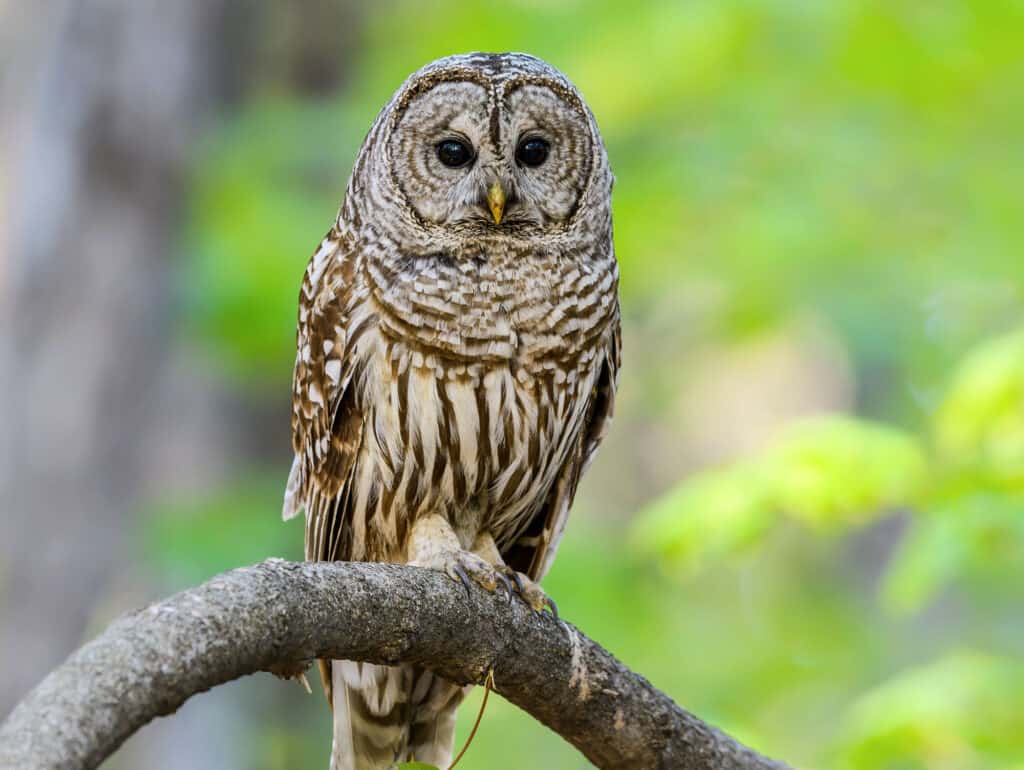
Barred owls have stunning brown and white plumage.
©FotoRequest/Shutterstock.com
The next owl is also one of the rarest owls in the state — the barred owl. There are not many barred owls in Colorado, but the few that are in the state only live in the far southeastern corner. They typically live in woodlands and forests, particularly in areas close to water. Barred owls are large owls that reach approximately 16 to 25 inches long, with a wingspan of up to 49 inches. Barred owls have a brown and white appearance, with vertical brown bars on their underside and horizontal brown bars on their breast.
3. Spotted Owl
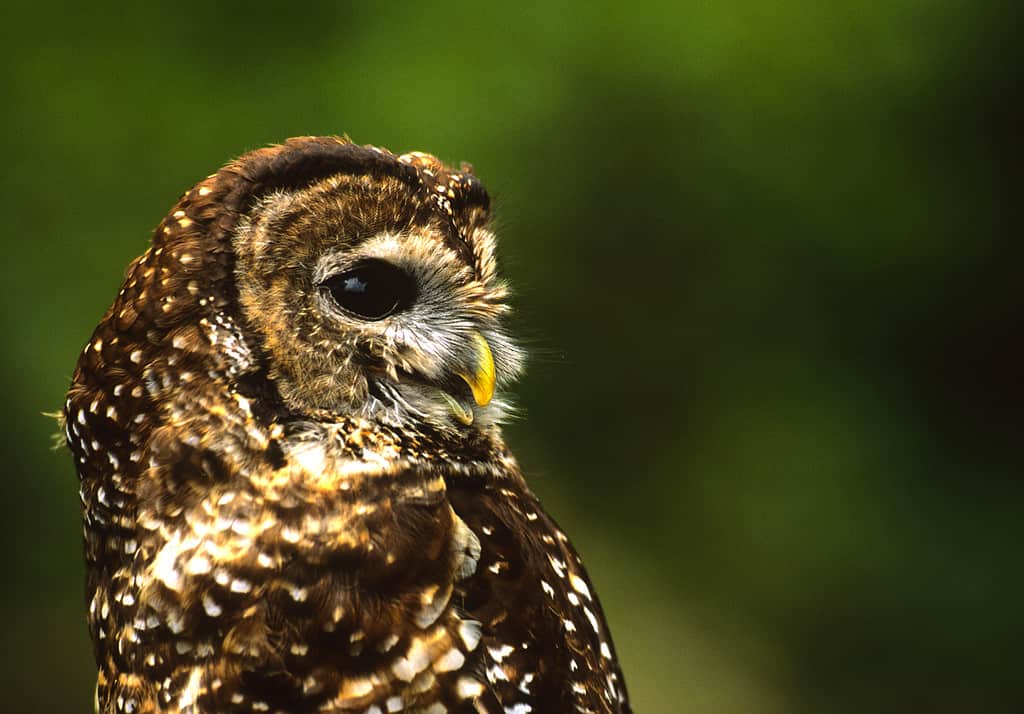
Mexican spotted owls are a threatened species in Colorado.
©Images in the Wild/iStock via Getty Images
Another incredibly rare species of owl in Colorado is the spotted owl, of which only the Mexican subspecies occurs in the state. They are a threatened species within the state and live in scattered distributions across the Rocky Mountains, where they inhabit canyons and forests. Mexican spotted owls are typically chestnut brown with brown and white spots, as well as noticeably dark eyes.
4. Burrowing Owl
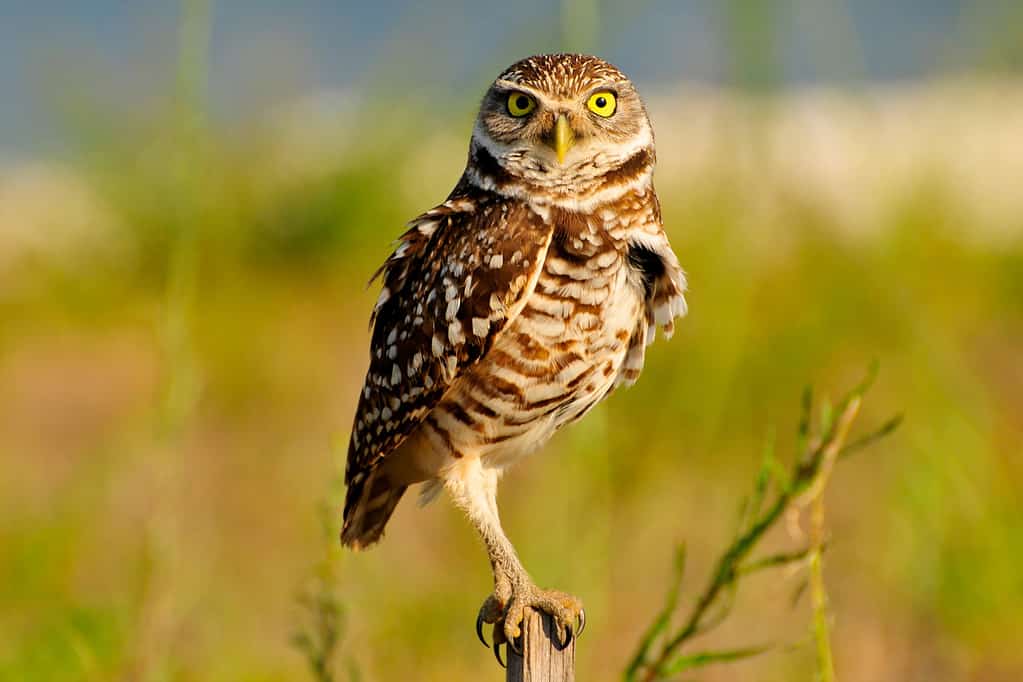
Burrowing owls live in burrows underground.
©Joliegordon/iStock via Getty Images
Another threatened species in Colorado is the burrowing owl, which can be found in the state during the summer months in open, treeless areas. They live underground and nest in burrows created by ground squirrels and prairie dogs. Burrowing owls are small birds but have long legs and have a brown and white barred appearance.
5. Northern Saw-Whet Owl

Northern saw-whet owls live in the mountains in Colorado.
©iStock.com/bookguy
One of the smallest species is the northern saw-whet owl, which is only six to eight inches long. They have a mottled brown appearance with white markings on their faces. Northern saw-whet owls mainly inhabit the mountains in Colorado. They usually migrate south in the winter, sometimes to Mexico, although some birds do remain in the state all year round.
6. Short-Eared Owl
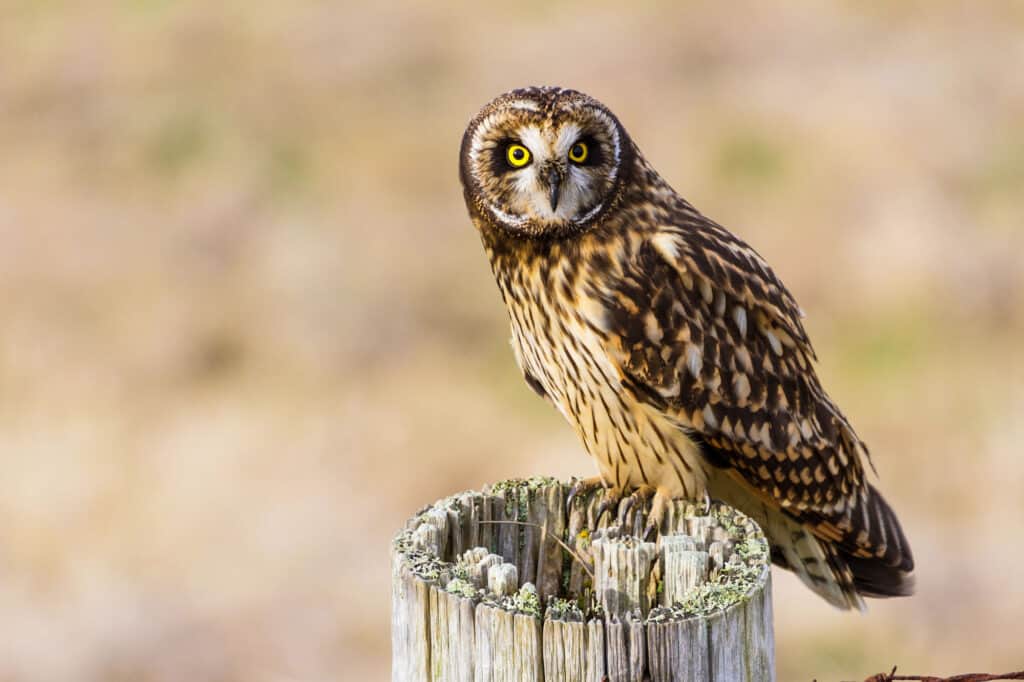
Short-eared owls can often be seen at dawn and dusk.
©iStock.com/Devonyu
The next owl in Colorado is the short-eared owl, which is mainly found in the eastern region of the state. They typically live in grasslands that are close to wet meadows and marshes. Short-eared owls are most active at dawn and dusk and prey on a variety of small mammals. Short-eared owls are 13 to 17 inches long and have a mottled brown appearance with paler areas underneath the wings.
7. Western Screech Owl
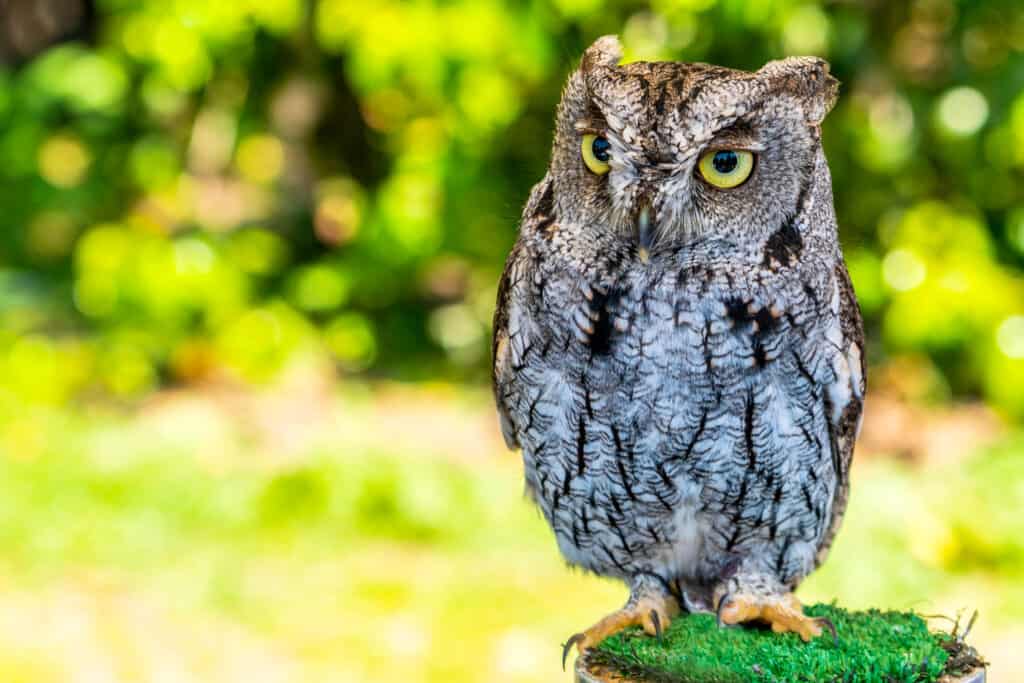
Western screech owls inhabit the southwestern corner of Colorado.
©Steve Bruckmann/Shutterstock.com
Next is the western screech owl, which lives mainly in the southwestern corner of the state, close to the Arkansas River. These owls are nocturnal but can often be heard due to their distinctive call which uses a series of short hoots. They are fairly small birds at around nine inches long but have a wingspan of up to 20 inches.
8. Northern Pygmy Owl
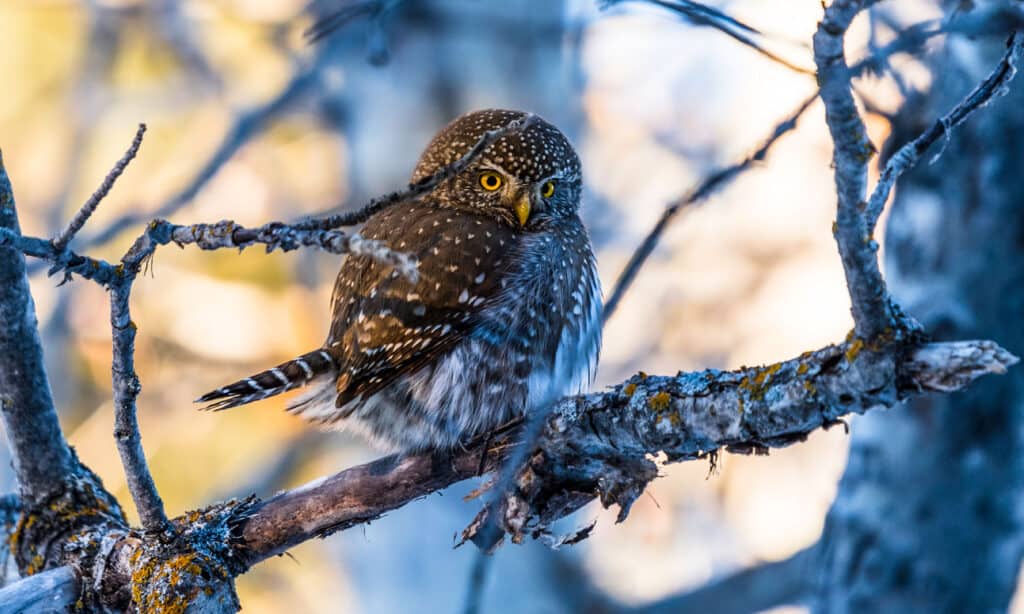
Northern pygmy owls are some of the smallest owls in Colorado.
©Jordan Feeg/Shutterstock.com
One of the smallest owls in the state is the northern pygmy owl at only seven inches long. These owls are dark brown with some white markings. They live in the mountains and foothills, where they typically nest in holes that have been created by woodpeckers. They are active throughout the day and mainly prey on small mammals and rodents.
9. Eastern Screech Owl

Eastern screech owls mainly live in the northwestern region of Colorado.
©mlorenz/Shutterstock.com
Closely related to the western screech owl is the eastern screech owl, which mainly inhabits the northwestern region of the state but has now been spotted as far as Denver. Eastern screech owls inhabit forests and woodlands, but can also be seen around fields and wetlands. They are nocturnal owls, so are rarely active during the day.
10. Boreal Owl
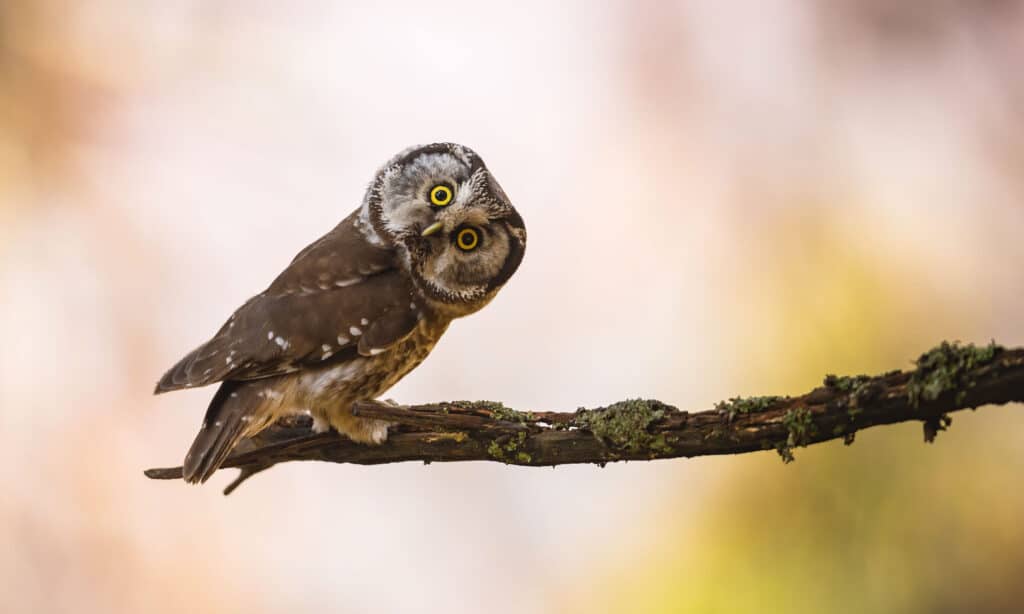
The boreal owl has a distinctive square-shaped face.
©WildMedia/Shutterstock.com
The boreal owl is a fairly small owl at eight to nine inches long, although females are larger than males. They have a distinctive appearance, with a square-shaped face and a white facial disc. Boreal owls have brown bodies with white markings on their backs but also have brown markings on a white belly. They inhabit the central mountains in Colorado, where they can be found all year long.
11. Long-Eared Owl
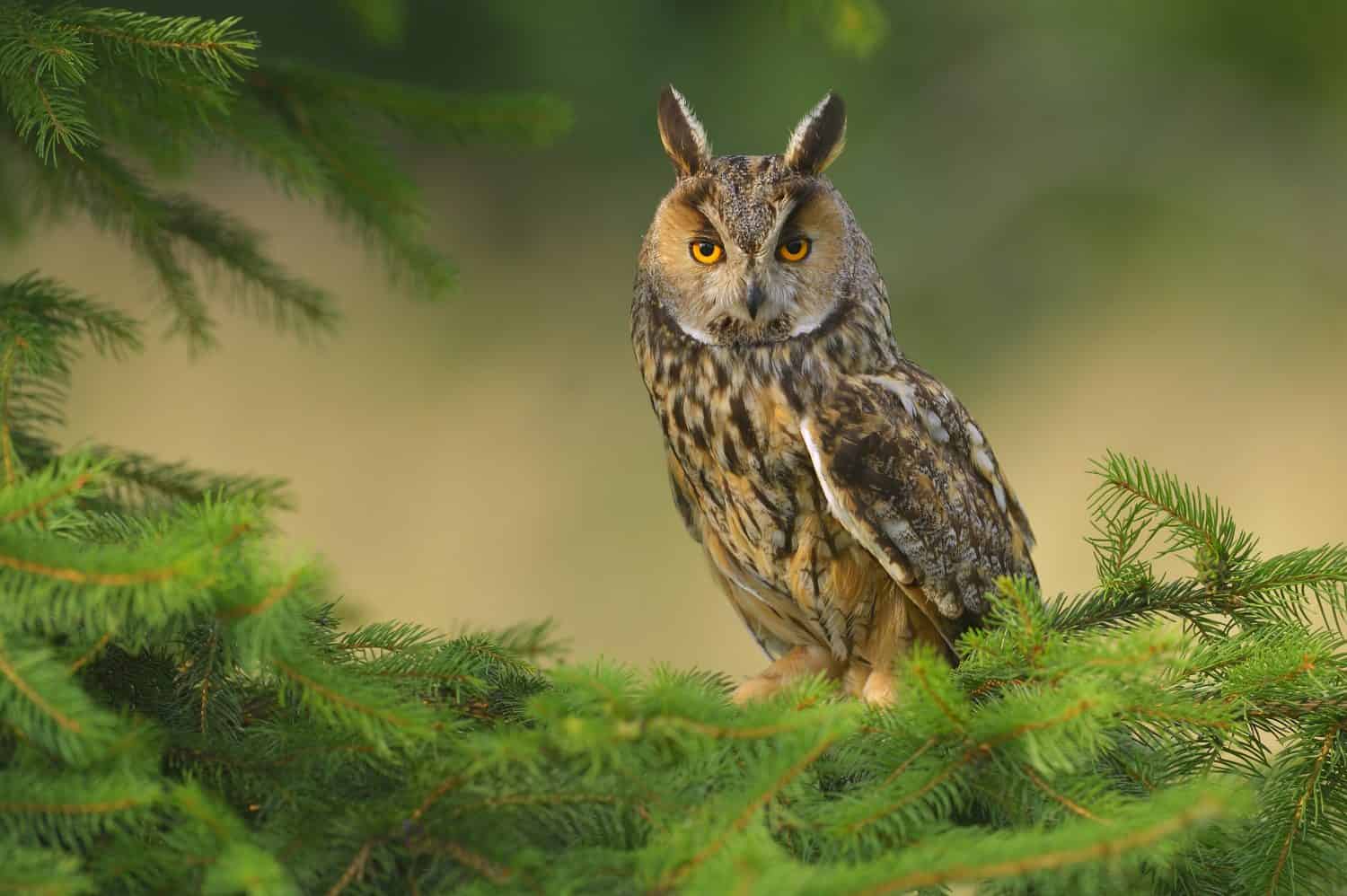
Long-eared owls live across the Western Slope all year round.
©Romuald Cisakowski/Shutterstock.com
A fairly common owl in Colorado is the long-eared owl, which typically inhabits the Western Slope all year round. However, they can also be seen across the rest of the state during the winter months. Long-eared owls inhabit coniferous and mixed woodlands but are highly nocturnal. They have distinctive long ear tufts and are typically light brown with darker markings.
12. Flammulated Owl
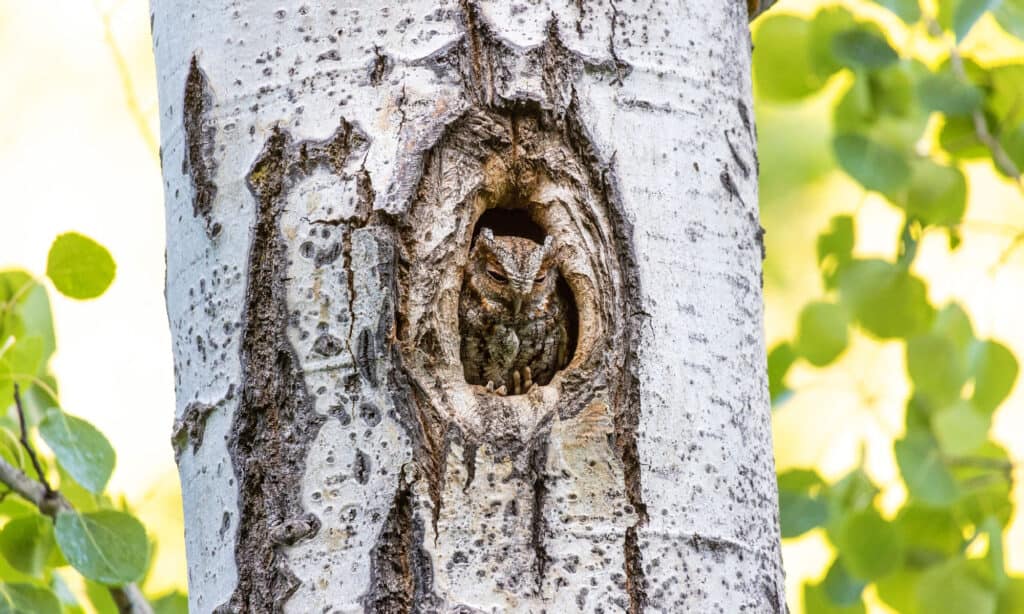
Flammulated owls live in Colorado between April and October.
©iStock.com/Devonyu
Another small owl in the state is the flammulated owl, which is approximately six to seven inches long, albeit with a fairly large wingspan of 14 inches. These owls are grayish-brown with white markings, although some may have a reddish appearance. Flammulated owls live in Colorado between April and October, where they are fairly widespread across the state. However, they then fly south to overwinter in Central America and Mexico.
13. Barn Owl

Barn owls are one of the most common owls in Colorado.
©iStock.com/mzphoto11
One of the most common owls in the state is the iconic barn owl. These are named because of their tendency to make their nests in barns and outbuildings. Barn owls have a classic heart-shaped face which helps to distinguish them from other species. They typically have a buff-colored body and wings with lighter underparts.
14. Great Horned Owl
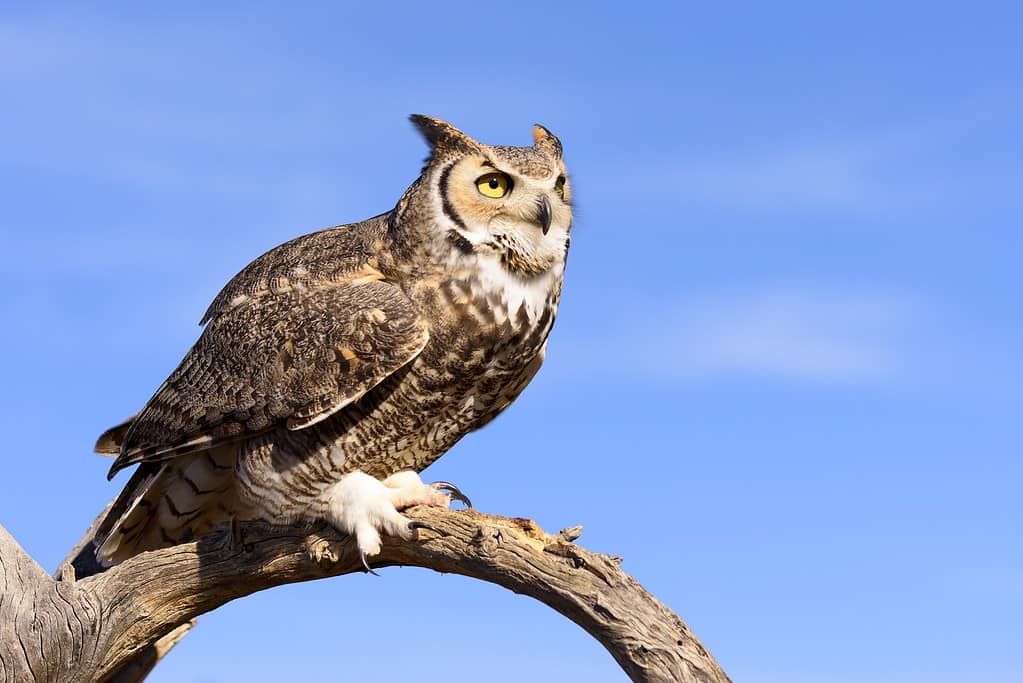
Great horned owls live in every state in Colorado.
©kojihirano/iStock via Getty Images
The most common owl in Colorado is the great horned owl, which can be seen all year round. They occur in every state and live in a wide variety of habitats, including forests, grasslands, and wetlands. Great horned owls are large owls, with a wingspan of up to five feet. They are grayish or reddish brown with a white patch on their throat. Great horned owls also have feathered tufts, or “horns” on their head which is where they get their name from. They are nocturnal owls but can sometimes be spotted at dusk too.
The photo featured at the top of this post is © DEBORA DUARTE LISBOA/Shutterstock.com
Thank you for reading! Have some feedback for us? Contact the AZ Animals editorial team.







